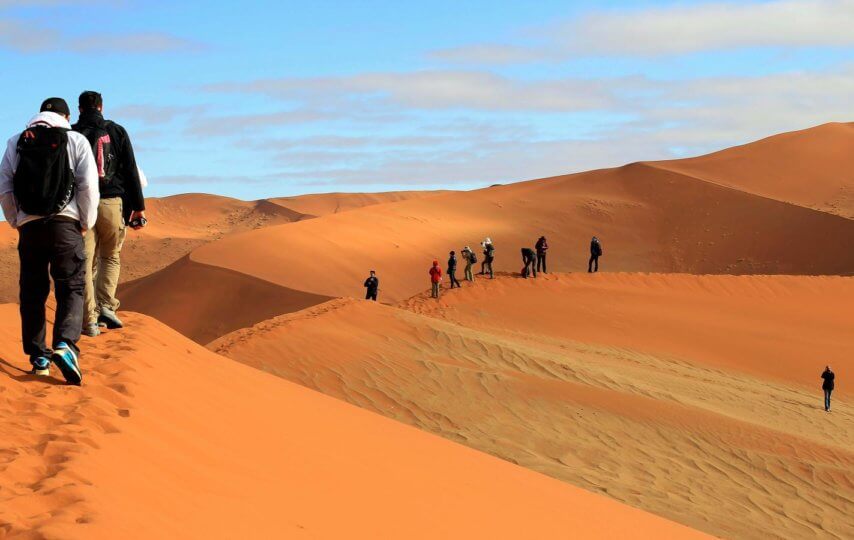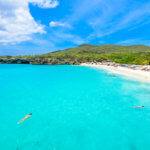Namibia isn’t as well-known as other nations. It is diamond in the rough, filled with vast seas, wildlife, savannah mountains, and game watching. Namibia is home to reservations in Africa and a number of the wildlife refuges. You will see the cultures, flamingos, lion, elephant, cheetah as well as ostriches. You could view the influence of Germany through era cities and the streets. Namibia has productive fishing, mining and tourism industries. Namibia is a country sharing borders with Angola to the north, Botswana, and the Caprivi Strip in its northwest, with Zimbabwe and Zambia.
History
Bushmen (San) were the first to occupy Namibia. They dwelt in groups and have been. Around 2,000 decades back, the Khoi-Khoi combined the San, and the two teams were finally displaced if Bantu-speakers arrived. The Germans jaded Namibia in the 19th century. During their rule, the Germans murdered two-thirds of the Herero people’s inhabitants since they revolted from the principle that was German. Germany apologized in 2004 for its genocide.
Following World War, I, Namibia was entrusted to South Africa (subsequently Southwest Africa) who dominated until the mid-1980s. South Africa enforced indigenous individuals. The land was given to white settlers. In 1966, South-West Africa’s People’s Organization (SWAPO) began a war for liberty. With the support of the United Nations, South Africa agreed to end its rule. The nation became independent. Namibia is determined by South Africa for a few economics, for example, meals, but rather stable thanks.
Economy
The Namibian marketplace has a convenient market area, which generates the majority of the country’s riches and an ancestral maintenance sector. Namibia’s gross domestic product (GDP) per capita is comparatively high among developing countries but obscures one of the many unbalanced profits sharing on the African continent. Even though nearly all the populace is dependent upon subsistence agriculture and herding, Namibia has more than workers and a well-trained expert and managerial class. The country’s modern formal economy is based on farming and capital-intensive industry. However, Namibia’s economy is heavily determined by the earnings generated from primary commodity exports in a few vital sectors, including fish, livestock, and minerals. Also, [the Namibian economy remains integrated with the economy of South Africa, as the bulk of Namibia’s imports originate there. Since independence, the Namibian Government has pursued free-market economic principles designed to] encourage industrial development and job creation. To facilitate this aim, the Government has actively courted donor assistance and foreign exchange. The Foreign Investment Act of 1990 gives for nationalization rights, freedom to remit capital and earnings, money convertibility, and a process for settling disputes equitably.
Tourism
Tourism is a generator of employment and an expanding sector of the economy. It’s the third-largest supply of foreign exchange following fisheries and mining. Even though the vast majority of Namibia people originate in the area, other travelers attract by the country’s unique mixture of beauty, cultural diversity, and political stability. Tourism in Namibia has had a positive influence on rural development and resource conservation. As of 2007, 50 conservancies were established while providing tens of thousands of Namibians with income, resulting. Visit Delta Airlines Flights to get discount on flight fares & destination packages to Namibia
Namibia remains something of a hidden treasure for all those in search of Africa. The country enjoys an economic abundance of its neighbours and is calm and secure. A desert nation, Namibia landscapes are diverse. The Namib Desert with dunes that are large and the plateau of mountains contrast harshly. The largest in Africa, the Etosha National Park, is currently providing the spectacular game. Namibia is a country with well-established parks with excellent opportunities for photography.
In Windhoek, African crafts are easily obtainable, and curios and the town’s excellent restaurants serve up amazing sports eggs. Etosha National Park is comprised of a large salt pan surrounded by over 8,500 square miles of grasslands. Antelopes, zebras, giraffes, the cats, wildebeest and elephants are visible to travellers. Waterberg Plateau Park has a range of hiking trails with manuals out there. Camping is available in Sesriem. Here, the Tsauchab River runs through a gorge in the plain. Climb the mountainously broad sand slopes in nearby Sossusvlei.
Hike the Fish River Canyon, however, only as long as you’re reasonably healthy. Guided excursions are available. About the coast is the resort of Swakopmund, surrounded by a desert. Damaraland is among the final refuges of the endangered black rhino. The Caprivi Strip is Africa’s best birding destination in the opinion of several.
Planning your trip
Passport/Visa Prerequisites: A valid passport is needed. European, U.S. Canadian and South African citizens don’t require a visa. People of different nationalities can purchase permits.
Population: 2,055,080
Languages: English (official), Afrikaans, German, Herero, Owambo
Predominant Religions: Animist, Christian (Lutheran)
Time Zone: 1 hour ahead of Greenwich Mean Time (+1 GMT). Daylight Saving Time is on the first Sunday in September.
Voltage Prerequisites: 220 volts
Telephone Codes: 264, state code, 61 (Windhoek city code), 641 (Swakopmund city code).
Climate
It is a time for wildlife and rains the least to October. It cools off at night and is warm throughout the day time. February and January are suggestive.
Cash
Money: Namibia buck (N$) Exchange leftover cash before leaving Namibia because it can be tricky to do away with differently.
Banking Hours: Monday-Friday 9 am-3:30 pm, Saturday 8:30-11 am
Taxes: value-added taxation is included in most prices.
Tipping: 10 percent for waiters and cab drivers
Security
Namibia has a relatively low crime rate, but muggings do happen. Other security issues to take note of are:
Avoid driving at night since livestock and wildlife could be hazardous.
Stay on well-traveled paths across the Caprivi Strip, across the Angola border. Following Angola’s civil war, the region became land, and hazardous mines are still in place.
Other hints:
Always carry ID on you, such as a photocopy of your passport.
Namibia is quite dusty, so shield your camera and other possessions.
Require a water source with you along with a complete tank of gasoline everywhere.
Driving is on the left side of this street.



